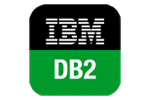ETL MongoDB Data to Your Data Warehouse within Minutes
Power your analytics with automated ETL data pipelines from MongoDB to your data warehouse without writing any code. Use our native connector to seamlessly extract, transform, and integrate your MongoDB data and quickly send it to your desired destination.
MongoDB ETL Simplified
Use Centerprise’s pre-built connectors to integrate MongoDB with a relational database or other disparate sources and generate insights. The out-of-the-box connectivity takes away the complexity of dealing with NoSQL data and dynamic schemas of MongoDB. It automatically detects schema, and generates a layout, which can be mapped to a relational database. Centerprise eliminates the hassle of manual hand-coding, so you can build your data pipelines faster.
Easily Manipulate your MongoDB with built-in Transformations
Take advantage of Astera Centerprise’s extensive built-in transformations to format, validate, and cleanse your MongoDB data before sending it to a data warehouse. You can also use MongoDB’s own set of transformations, such as sort, filter, etc., prior to integration to expedite the extraction process and improve performance.
Read more
Accelerate MongoDB Data Analysis with Automation
Achieve near real-time data synchronization, or migrate large volumes of MongoDB data to another database by automating your workflows to save time and minimize the risk of errors. Set event and time-based triggers to execute your workflows without any manual oversight.
Read more
Establish No-Code MongoDB Connectivity With 40+ Sources and Destinations
Create a unified view of your data assets by seamlessly integrating MongoDB database with other relational databases, data warehouses, and file formats. With our native connectors and code-free environment, it is just a matter of drag and drop!
MongoDB with MySQL
Replicate your MongoDB data in MySQL in real time using the change data capture feature.
MongoDB with SQL Server
Effortlessly map your NoSQL data from MongoDB to SQL Server without writing code.
MongoDB with PostgreSQL
Expedite large scale data migrations from MongoDB to PostgreSQL using intuitive data mapping and automation features.
MongoDB with Amazon S3
Convert and manipulate unstructured data from MongoDB and upload it to the cloud with our native JSON connector.
MongoDB with Snowflake
Design simple data flows from MongoDB to Snowflake. Use our pre-built transformations to manipulate your MongoDB data and make it compatible with your destination.
MongoDB with Amazon Redshift
Get insights from your MongoDB data by integrating it with Amazon Redshift data warehouse. Use our extensive automation and job scheduling features for real-time analytics.
Over 40 Connectors To Choose From
Download Free Centerprise Trial
Frequently Asked Questions About MySQL Connectors
You can use the Astera Centerprise SQL Server connector to easily convert data to and from SQL Server databases. Our ETL platform can help you load SQL Server data from and to over 40 data sources and destinations.
Yes. Astera Centerprise allows you to easily extract and transform data from SQL Server to any other application. You can use the Centerprise built-in transformations to prepare and enrich data. We offer over 100 transformations to create unique data models that you can load to your desired destination.
You can load as many data points as you want. Centerprise data integration software also lets you load data in bulk. Since our solution is deployed on-premise and comes with a parallel processing engine, it depends on your system’s performance as to how many data points can be loaded at once.
Yes, Centerprise is built on a cluster-based architecture that allows jobs to run in parallel. With that said, it also offers automatic distribution across multiple nodes when transferring data from source to destination.
Astera Centerprise supports both ETL and ELT modes for integrating data to and from your SQL Server database to other databases. Our software offers pushdown optimization to transform data directly on both source or destination databases. You can also write SQL queries to override transformations and enhance data processing.









































